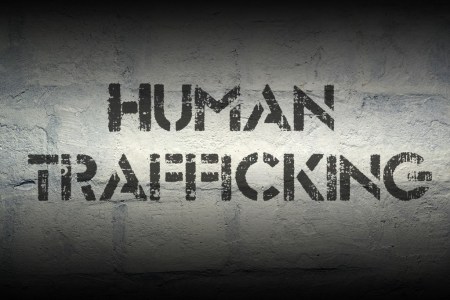Anti-Trafficking Sensational Misinformation - Part II
Written by Laura Murphy, Loyola University New Orleans, Modern Slavery Research Project
Are America’s homeless youth targeted by human traffickers? Yes. But not in the sensational way we always hear about.
What we read about sex slavery today is alarming, sensationalized, and often perverse. Tracking down one of the most frequently reported statistics in today’s anti-slavery movement – that runaways are at high risk of sex trafficking – paints a very clear portrait of the unnecessarily exaggerated appeals that are widely-disseminated and oft-repeated.
So what do we know about the fate of runaways in the US? The Department of Health and Human Services reports that “Children, both boys and girls, are solicited for sex, on average, within 72 hours of being on the street. The National Center for Homeless Education shortens the time window and increases the risk by saying “As many as one third of teen runaway or thrown away youth will become involved in prostitution within 48 hours of leaving home.” Fox News Milwaukee recently increased the number of victims to say that “90% of runaways become part of the sex trade business — and most are coerced within 72 hours of running away.”
So are runaways solicited for sex or are they recruited by pimps or are they forced into the sex trade? Does this happen to runaway children or all homeless youth? Does it take 48 or 72 hours for them to be trapped?
I enlisted the students in my freshman seminar on 21st Century Slavery and Abolition at Loyola University New Orleans to search for the origin of this human trafficking factoid, and they easily discovered how tangled the web of misinformation is. A 2009 Department of Health and Human Services report indicates, “Experts have reported that within 48 hours of running away, an adolescent is likely to be approached to participate in prostitution or another form of commercial sexual exploitation; however, no definitive published research substantiates this claim.” They cite a 2001 report by Mia Spangenburg that suggests “After only an average of thirty-six to forty-eight hours on the streets, young people are solicited for sex in exchange for money, food or shelter.” Spangenburg’s source? A 1996 Christian Science Monitor article by Mark Clayton titled “Sex Trade Lures Kids from Burbs,” in which we learn that “within 48 hours of hitting the streets, a juvenile will be approached with an offer of money, food, or shelter in exchange for sex.” And Clayton’s source? There is none. Clayton mentions the National Center for Missing and Exploited Children (NCMEC), which has referred to the trafficking terror faced by runaways for years. As late as 2010, NCMEC’s president and CEO Ernie Allen could only vaguely attribute the factoid to estimates made by “some runaway groups,” and NCMEC has since stopped using the stat. It is impossible to find any credible source for this claim.
This rampant misinformation and fear mongering persistently threaten to undermine the credibility of the anti-trafficking movement.
The Modern Slavery Research Project at Loyola recent performed a study titled “Sex and Labor Trafficking Among Homeless Youth: A Ten City Study (full report)." For this study, we interviewed 641 homeless residents and clients of Covenant House International’s network and unsurprisingly found that there is indeed real reason to be concerned about trafficking among homeless youth, though there remains no evidence to substantiate any of these exaggerated claims.
Among the homeless and runaway youth aged 18-24 that we interviewed, 19% of them had been trafficked for either sex or labor in their lifetimes. Furthermore, 91% of them indicated that strangers had approached them while they were homeless or otherwise financially struggling, offering suspiciously lucrative job offers. They described being approached on the street, at bus-stops and train stations, on social media. They told stories of being approached in or directly outside homeless shelters and government assistance offices. They were offered jobs selling stolen goods, distributing cell phones, working in landscaping, in magazine sales; others were offered jobs as models, in film, or even pornography. Many of those approached assumed or were told explicitly that they were being offered an opportunity to work in the sex trade.
One young woman said that she had been offered several escort jobs by strangers who “made it seem like it was something simple, legal.” Another pimp encouraged a young woman by insisting, “Y’all are missing out on money. Y’all are young and don’t know no better. This is good money that y’all could be having.”
One woman was approached at the shelter by a young man who wanted to take her out of town with him. She told us that the young man was trying to recruit women into the sex trade right under the noses of the shelter’s watchful staff.
When asked what the strangers offer her, one woman said “They say they will take care of me and my baby” – certainly a difficult offer to turn down.
One young man reported that men would try to tempt him by offering him jobs in modeling or manual labor. He told us that a “dude asked me about a job. I was like, yeah. He heard about a warehouse and they start you off at $15, so I said cool. Then he asked me if I wanted to fuck him. Nigger, you serious? I was asking about a job!”
Taking advantage of the vulnerabilities of young people who are down on their luck and are searching for work, recruiters try to lure homeless youth with lucrative opportunities to work in the sex trade. As a result of the persistent predatory behaviors they encountered while walking around alone, residents at Covenant House expressed a great deal of anxiety about the risks involved in sleeping outside.
As researchers, we want our work to be of use to others, but because we have seen “statistics” like the 72-hour myth, we worry that our findings will be misconstrued to provide salacious headlines. We were unable to confirm or deny such exaggerated claims because youth felt like they were being approached constantly by people who were targeting their vulnerabilities, and they were unable to put a timeline on when they were approached, nor could those who did not fall for the too-good-to-be-true offers confirm their suspicions of the people who approached them.
What our research does indeed tell us is that people are targeting vulnerable homeless youth in New Orleans to offer them seemingly lucrative work opportunities that young people find dangerous or suspicious. And we know, from the reports of the youth themselves, that some young people are indeed accepting those offers.
There is no doubt what this finding does indeed suggest: we need to rely more on valid research on the vulnerability of young and homeless people to traffickers. From that work, we can equip organizations and agencies with knowledge that will assist them in responding appropriately to the frightening realities that young people are experiencing. We hope that our new study, as well as those we’ve produced in the past, will fill some of that gap. The research also suggests that we need more youth programs that involve resilience strategies, self-esteem, and self-empowerment that can bolster young people’s resistance if they do find themselves on the streets or otherwise vulnerable to predatory offers.
If nothing else, we hope to suggest that we can stop using sensational headlines, based in exaggeration and misinformation, to promote a cause that needs no added drama to engage us. We should avoid all of the sensational misinformation that has dominated this issue and focus on the voices of the young people who live this reality every day.
Laura T. Murphy is an Associate Professor of English at Loyola University New Orleans and Director of the Modern Slavery Research Project. She believes that community-based research is at the heart of social change. She provides research services, training, and education on modern slavery and human trafficking throughout the US as well as internationally. Her books include "Survivors of Slavery: Modern Day Slave Narratives" and "Metaphor and the Slave Trade in West African Literature." She is currently working on a new book titled "The New Slave Narrative."





